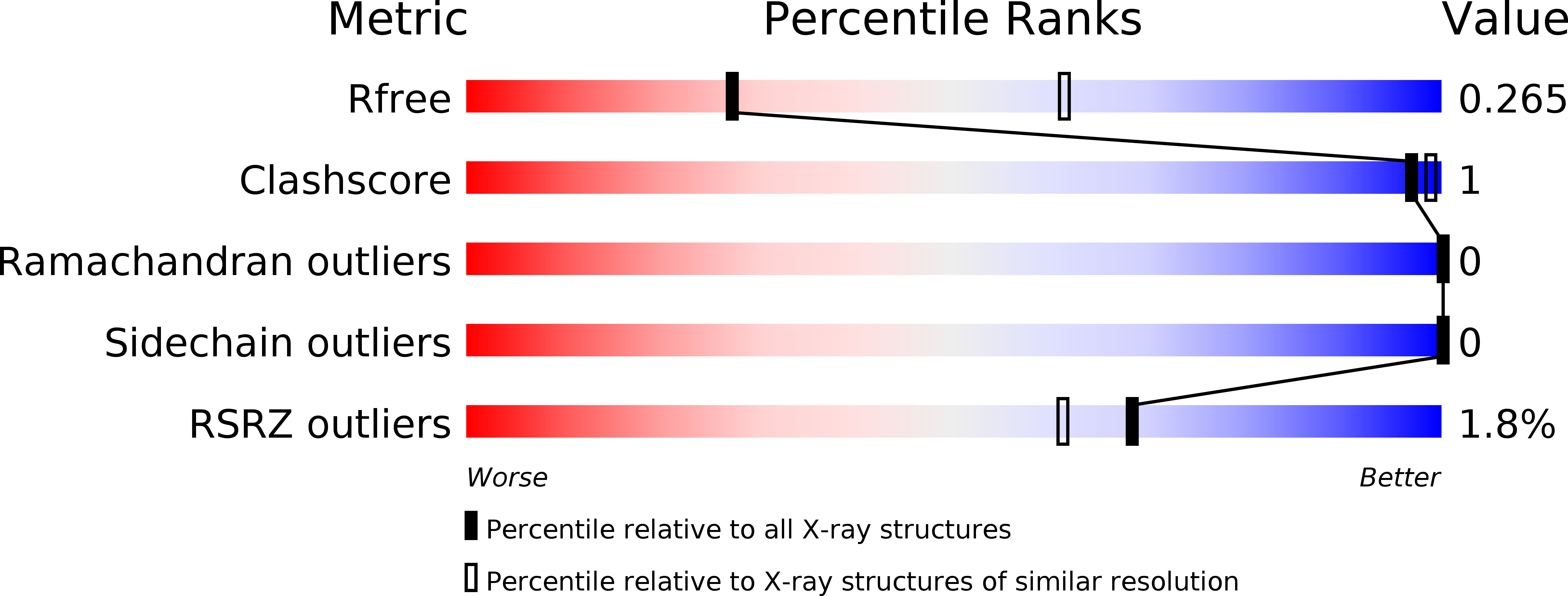
Deposition Date
2015-03-04
Release Date
2016-01-27
Last Version Date
2023-09-27
Entry Detail
PDB ID:
4YKA
Keywords:
Title:
The structure of Agrobacterium tumefaciens ClpS2 in complex with L-tyrosinamide
Biological Source:
Source Organism:
Agrobacterium fabrum (strain C58 / ATCC 33970) (Taxon ID: 176299)
Host Organism:
Method Details:
Experimental Method:
Resolution:
2.80 Å
R-Value Free:
0.25
R-Value Work:
0.18
R-Value Observed:
0.18
Space Group:
P 21 21 21


